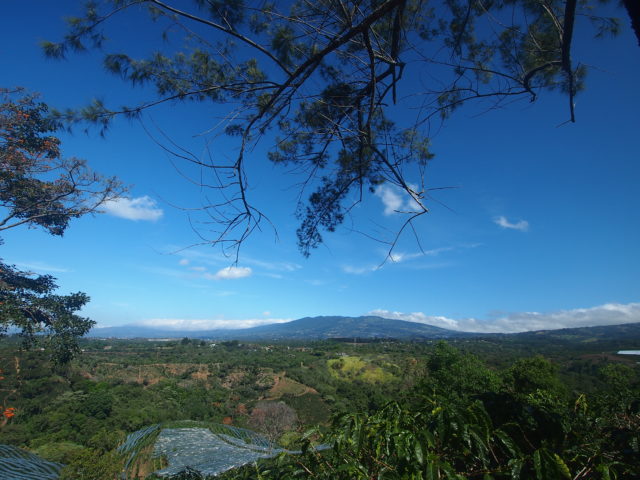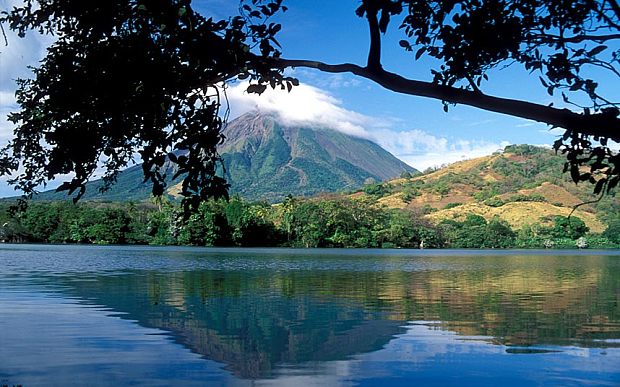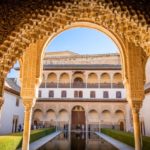A History of Displacement: Race, Ethnicity and Prejudice in Costa Rica

I had lived in Costa Rica for four months and had never seen another black person.
Afro-Latinos occupy a large population in every Central American, South American and Caribbean country. Costa Rica is definitely no exception. Nonetheless, during my entire study abroad experience in 2014, I hadn’t seen a single Afro-Latino or Afro-Latina. I had lived in Santa Elena in Monteverde, I had traveled to Santa Teresa, Jacó, Turrialba, Tirimbina, San José, Cartago, Puntarenas, Heredia, Alajuela, Volcán Irazu, Volcán Arenal, Guanacaste, La Fortuna, Las Juntas, Cuajiniquil, and I had even traveled close to the edges of Limón.
And still…
Not.
A.
Single.
One.
As a part of my studies, I was required to take a course on development and social change in Costa Rica. This class really interested me because I identify as a black woman, and I wanted to know what that would mean within the context of social structures surrounding race and ethnicity in Costa Rica.
In the early twentieth century, the displacement of the Afro-Latinos almost mirrored the Trail of Tears in the United States.
Coming from a country where there are centuries worth of history revolving around race, I have become acutely cognizant of my identity and the way in which I am perceived in around the world. I had not been particularly worried that there would be problems in Costa Rica centered around my race.

I was not even worried about the way people would judge my race here. I was simply curious about what my experiences would be like and whether I would categorize them as racist, particularly in comparison to the experiences I have had in the United States.
In my development and social change class, I learned that Costa Rica has a history of displacement. In the early twentieth century, the displacement of the Afro-Latinos almost mirrored the Trail of Tears in the United States. The Trail of Tears was an event where thousands of Native Americans were forced west of the Mississippi River, resulting in thousands of deaths and the loss of autonomy, resources, and the Native Americans’ natural land. The displacement in Costa Rica has resulted in the absence of Afro-Latinos in virtually every part of the country, except one.
Regardless, I became even less conscious of my skin color in Costa Rica than I have been in all my life in the United States.
It is different in my country. In America you can literally find black and brown people in every state. There is not one central location where all of the black people reside. There are even about 200 existing Native American tribes scattered around the country, although the erasure of their general population and culture has done a lot to seclude them and keep them hidden. In Costa Rica, however, the Afro-Latinos who were historically residing in the central areas of Alajuela, Cartago, and Heredia have all been displaced to Limón.
Although the results and evidence of racial history are very apparent, and seeing no Afro-Latinos was my true reality, I experienced no racism at all in the four months I was there.
There are many factors that may have played into this fact, the first and most obvious one being my nationality. Regardless, I became even less conscious of my skin color in Costa Rica than I have been in all my life in the United States.
Check out Pink Pangea’s Writing, Yoga, and Meditation Retreats.
This may seem shocking, but it may also be due to another fact. The most prevalent prejudice that exists amongst the Costa Rican people today is the backlash and oppression of Nicaraguans.
Costa Rica is economically vibrant in comparison to Nicaragua. Simply being in Granada for three days was enough to show me why so many undocumented Nicaraguans leave their country in hopes of finding a better life and a more fulfilling future. Nicaraguans are seen by the Costa Ricans much like undocumented Mexicans are seen by some Americans in the United States.
The most prevalent prejudice that exists amongst the Costa Rican people today is the backlash and oppression of Nicaraguans.
Generally speaking, the states bordering Mexico, namely California, Arizona, New Mexico, and Texas, have developed a very strong prejudice towards Mexicans. In reaction and addition, the rest of the United States has conjured up an opinion of their own, usually based on personal experience, media, or “common” knowledge.
Since Costa Rica borders Nicaragua, the dynamics between the relationship of the two countries and the sentiments surrounding the immigrant population is quite similar to that of the United States.
In Costa Rica, our program professors warned us that we might hear our host families talk about Nicaraguans and say things like “they are taking our jobs” or “they are ruining our economy.” We were also warned about people who blame Nicaraguans for “taking all of the resources” and being a nuisance to Costa Rican society.
The truth of the matter is, similar some Mexican immigrants to the United States, many of them are under both scrutiny and at the mercy of Costa Ricans. They travel undocumented and if they are lucky enough to find work, they are stuck for years doing menial labor jobs. Nicaraguans are often maids, field workers, janitors, inhabitants of shacks and shanties, and some even remain homeless. They stay and do the work that they do because their menial labor lives in Costa Rica are five times better than the lives they would have back in Nicaragua.
With gorgeous lakes, amazing attitudes, an awesome language, fantastic food, and exotic volcanic islands, Nicaragua remains one of Centrals America’s most beautiful treasures.
My trip to Granada put all of this into perspective. During my vacation, I stayed in Hotel con Corazon in Granada. Smack down in the middle of a poor residential neighborhood was a marvelous structure. Though, for security reasons, I’m sure, it is hard to tell from the outside.
From the exterior, Hotel con Corazon is a big, unappealing white building in the middle of other big, similar, solid color buildings. There is nothing special about it that the locals can see. When you take your first step past the reception inside, you walk into a gorgeous rectangular atrium filled with trees, plants and flowers. The hotel comes equipped with hammocks, a pool, and beautiful Spanish-styled bedrooms, only a five-minute walk from Calle La Calzada.
A History of Displacement: Race, Ethnicity and Prejudice in Costa Rica
Immediately outside of the establishment is incredible poverty. Roaming through the streets of Granada, not far off from the strip and the hotel, are residential houses where you can see multiple barefoot children. If you walk on the strip, there are children begging up and down the street—morning, noon, and night. If you are generous enough to give them money once, they ask you every time they see you. With swollen eyes, dry skin, and tattered clothes—it is hard to say no.
The juxtaposition of the smiling faces of foreigners eating belly-bloating meals and poor children dragging by with longing eyes is enough to understand the want and dream of a better opportunity amongst the Nicaraguan people.
But, through the pain, and the poverty—there is the beauty of the country, the spirit of the locals, and the vibe of the atmosphere. With gorgeous lakes, amazing attitudes, an awesome language, fantastic food, and exotic volcanic islands, Nicaragua remains one of Centrals America’s most beautiful treasures.
When you go to Nicaragua to marvel at its splendor, do so with an open mind and an open heart. Help where you can, and show love – con corazon.








